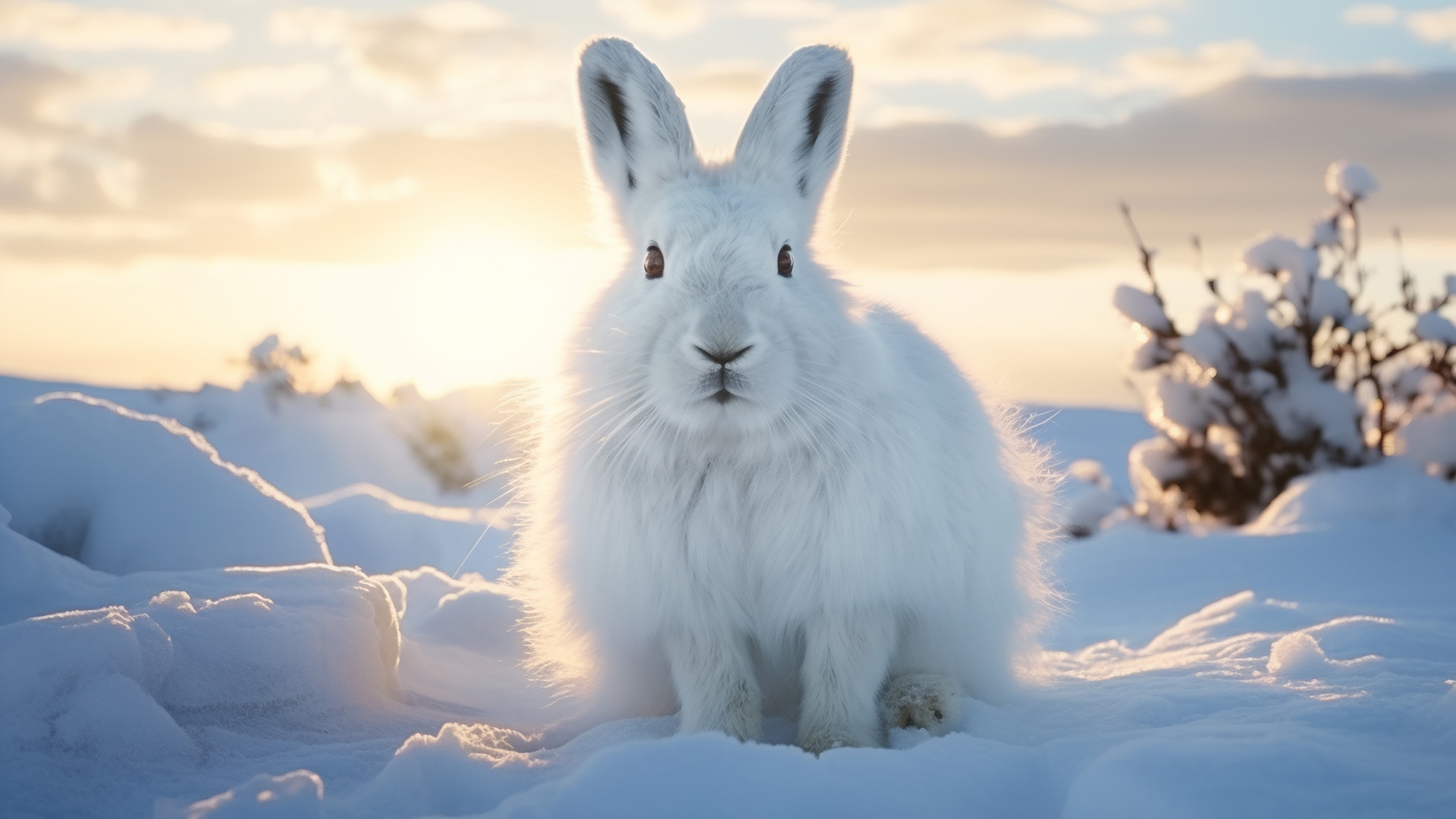The Arctic is one of the most extreme and astonishing regions on Earth, a frozen wilderness where only the most extraordinary creatures manage to survive. This icy expanse, dominated by endless snowfields, towering glaciers, and frigid seas, has shaped some of the most unique and resilient wildlife the planet has to offer.
Each species has adapted to thrive in this unforgiving environment, showcasing nature’s remarkable creativity in survival strategies. The Arctic is home to all kinds of animals – apex predators with snow-white camouflage, all the way down to tiny fluffballs capable of withstanding brutal subzero temperatures!
Their superpowers range from built-in invisibility cloaks to some of the most effective natural insulation systems found in the animal kingdom! If you’re enchanted by majestic tundra rulers or curious about the secrets hidden beneath the frozen waves, prepare to be amazed.
Let’s take a look at the fascinating world of mind-blowing Arctic animals!
1. Arctic Fox
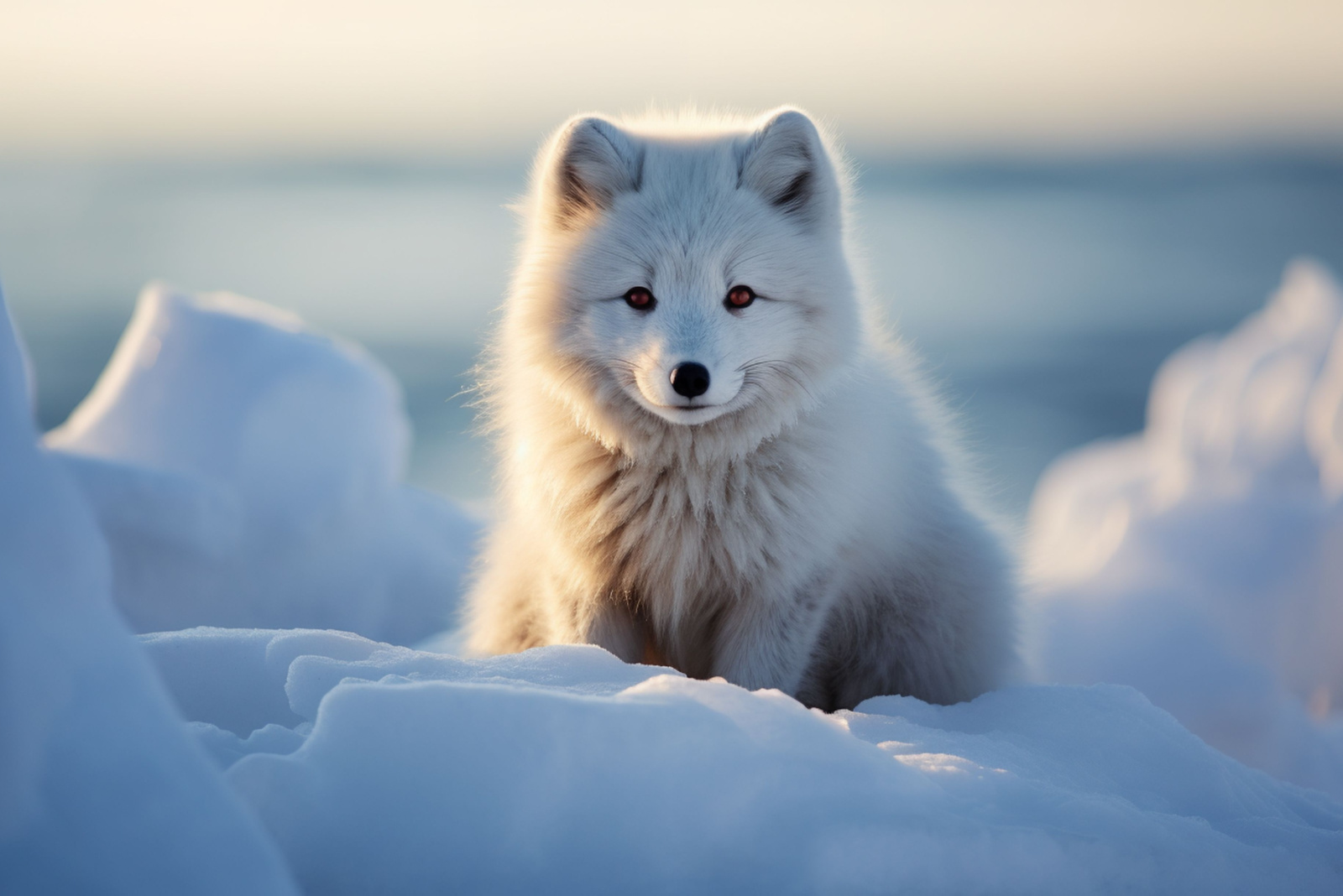
The Arctic fox is a total winter ninja, perfectly designed to thrive in one of the most unforgiving environments on Earth! Covered in a dense, luxurious white coat, this clever predator uses its fur not just for camouflage but also as a powerful shield against the extreme cold.
Their insulation is so effective that they can withstand temperatures plummeting as low as -50°C without a shiver. And I get chills when the AC goes too wild!
It also has a compact body, small ears, and a short muzzle, all adaptations to minimize heat loss in the icy tundra. As if that wasn’t impressive enough, the Arctic fox undergoes a full seasonal wardrobe change!
During the summer, when the landscape shifts from snow to rocky tundra, its coat turns a dusty brown, allowing it to blend into the terrain seamlessly. Expert camouflage like this not only helps with hunting small prey like lemmings and birds but also protects it from larger predators like polar bears and wolves! Truly amazing.
2. Polar Bear
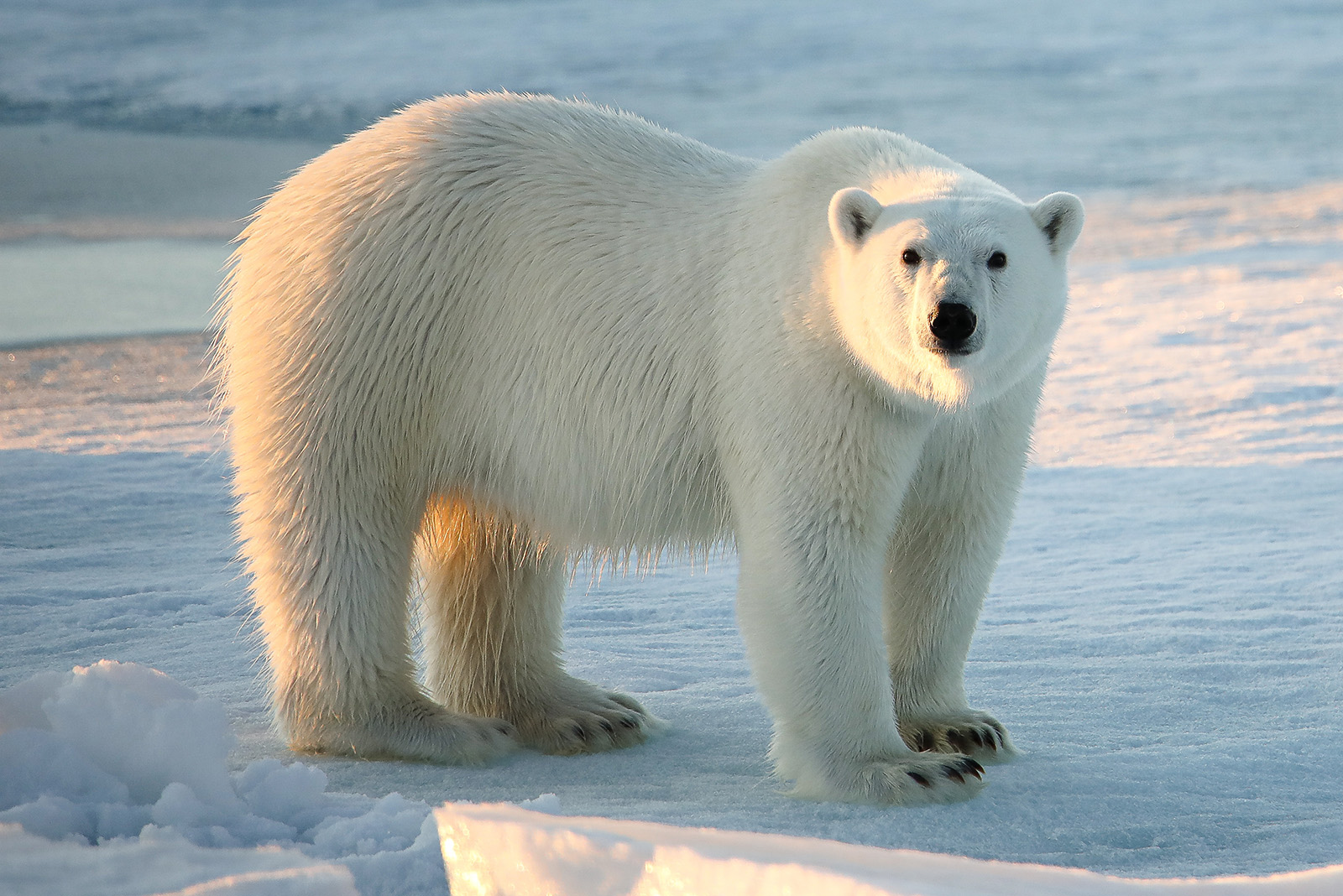
The polar bear is the undisputed heavyweight champion of the Arctic, both in size and dominance! Towering over most other carnivores, these colossal creatures can weigh up to 1,500 pounds, making them the largest land carnivores on Earth.
Despite their cuddly appearance, these bears are powerful predators, perfectly adapted for life on the frozen sea ice. Their thick, water-repellent fur covers a dense layer of insulating fat that can be up to four inches thick, providing exceptional warmth during frigid Arctic winters.
Polar bears are master hunters, using their immense strength and patience to break through sea ice and snatch unsuspecting seals (their primary food source). As a seal lover (Who isn’t? Have you seen them? Adorable!), I wish they didn’t eat them. But I guess that’s just how nature works! You gotta do what you’ve gotta do to survive.
Their incredible sense of smell is almost superpower-like, allowing them to detect seals from nearly a mile away, even beneath layers of compacted ice. Sadly, climate change poses a severe threat to their habitat, with melting sea ice shrinking their hunting grounds.
3. Narwhal
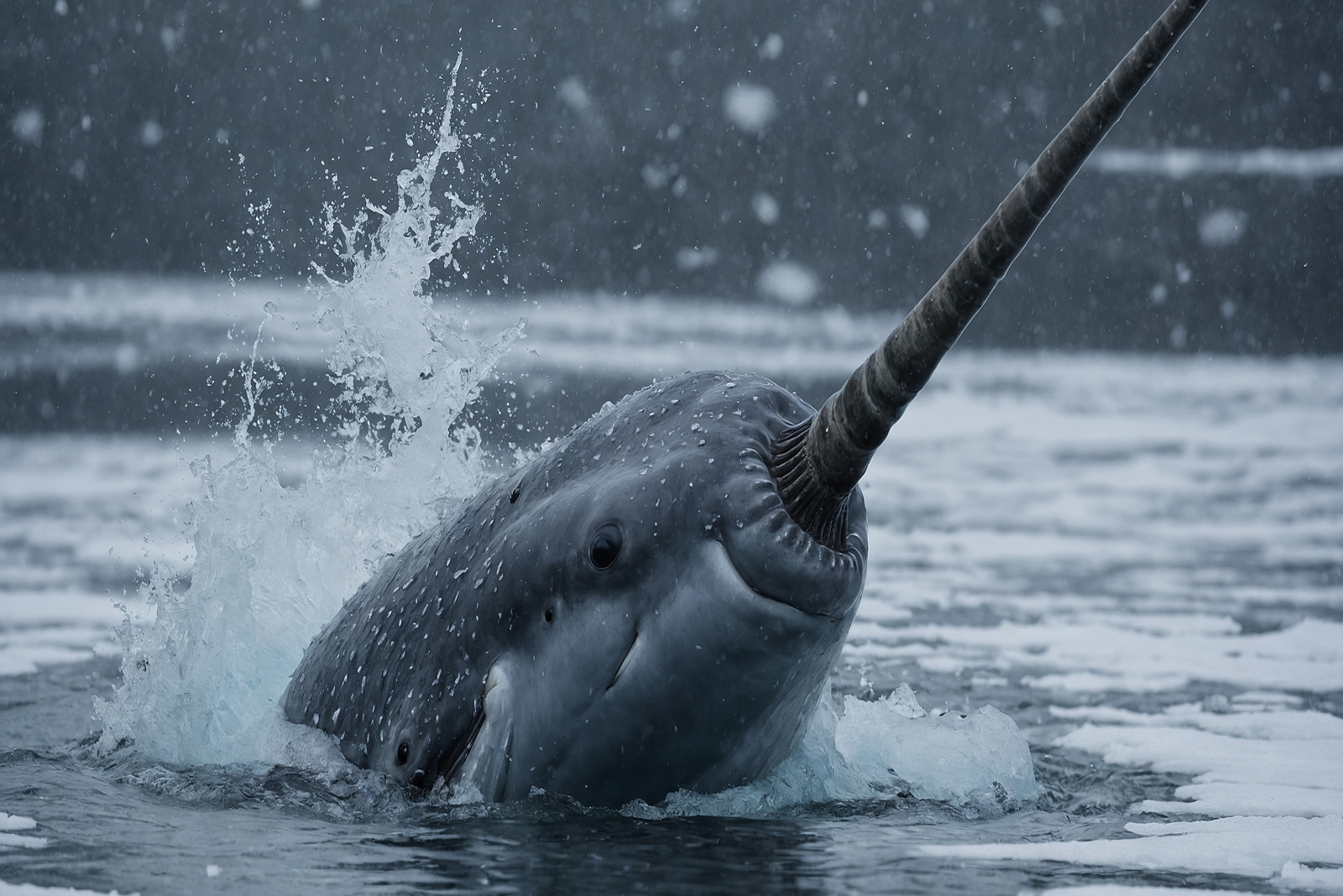
The narwhal, or the ‘unicorn of the sea,’ is one of the most fascinating and mysterious creatures in the Arctic waters! This whale is famous for its iconic spiraled tusk, a tooth that can grow up to 10 feet long and adds an almost mythical charm to its look!
But this tusk is also pretty useful! It’s filled with millions of nerve endings, allowing narwhals to detect changes in their icy environment. Scientists believe the tusk may also play a role in communication, mating displays, and possibly even sparring between males!
More nerdy info! Narwhals are capable of plunging over a mile deep beneath the Arctic ice in search of squid, cod, and other deep-sea prey. Their remote, icy habitat makes them difficult to study, adding to their aura of mystery!
Despite their elusive nature, narwhals are vital indicators of Arctic ecosystem health if you didn’t know. How? Well, their population is affected by both climate change and human activity!
4. Snowy Owl
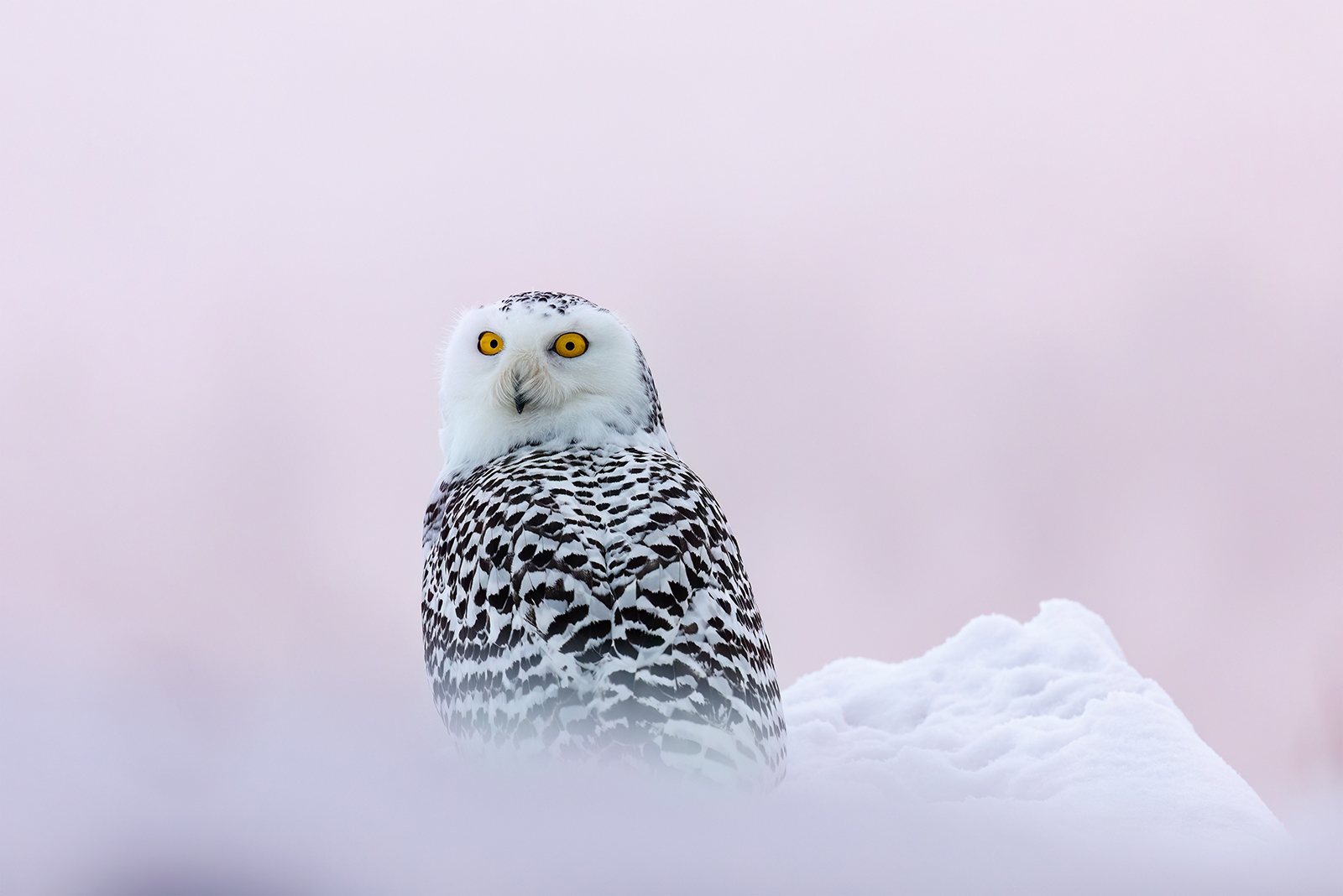
The snowy owl, made famous by its association with the Harry Potter series, is a true Arctic icon with its breathtaking white plumage and piercing yellow eyes! But this majestic bird isn’t just about looks, it’s a survival specialist built for life in the harsh tundra.
Its snowy feathers are useful for camouflage, sure, but they also provide exceptional insulation against freezing temperatures, making this bird perfectly adapted for life above the Arctic Circle!
Snowy owls have keen eyesight capable of spotting small mammals, like lemmings, from incredible distances! They have powerful talons and a near-silent flight, allowing them to swoop down on prey with stealth and precision! Oooh! Sneaky!
Unlike many other owl species, snowy owls are diurnal, often hunting during the day due to the Arctic’s constant daylight in summer months. Interestingly, their populations fluctuate based on lemming abundance, with booming owl numbers occurring when prey is plentiful!
5. Beluga Whale
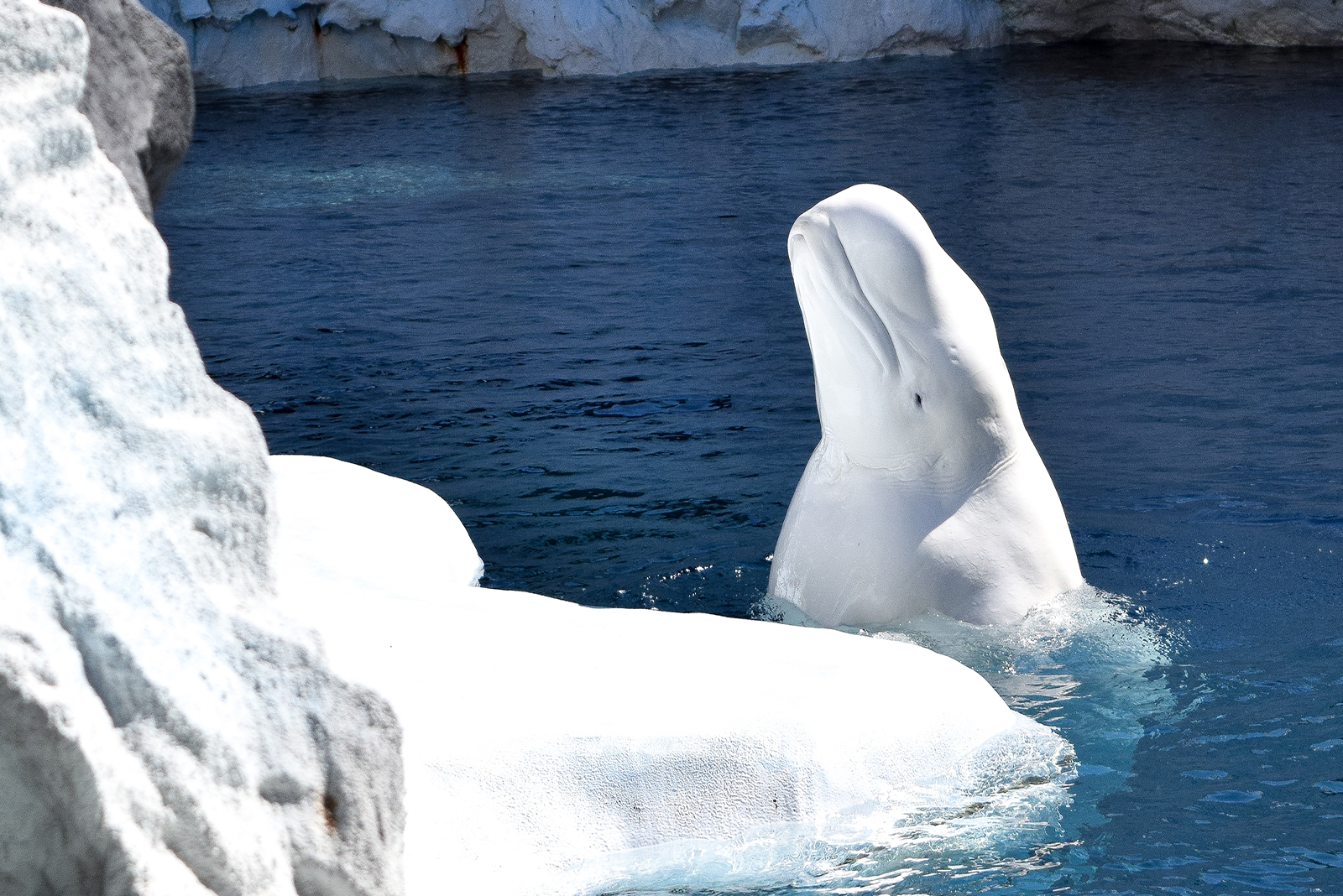
The beluga whale, affectionately known as the ‘canary of the sea,’ is a vocal virtuoso in the icy Arctic waters. These pale, all-white whales are famous for their extraordinary vocal abilities, producing a symphony of clicks, whistles, and chirps that can be heard echoing through the frigid seas!
Their vocalizations serve multiple purposes, from communicating with pod members to echolocating prey in the dim, ice-covered waters where visibility is limited. What makes belugas especially fascinating is their ability to mimic sounds and even mimic human speech in some instances! Woah!
Their smooth, white skin is also pretty cool. It’s a vital survival tool. It camouflages them against the ice, reducing the chance of being spotted by predators such as orcas. Belugas are incredibly social and curious, often seen engaging in playful interactions with one another and sometimes even approaching boats with childlike fascination!
6. Musk Ox
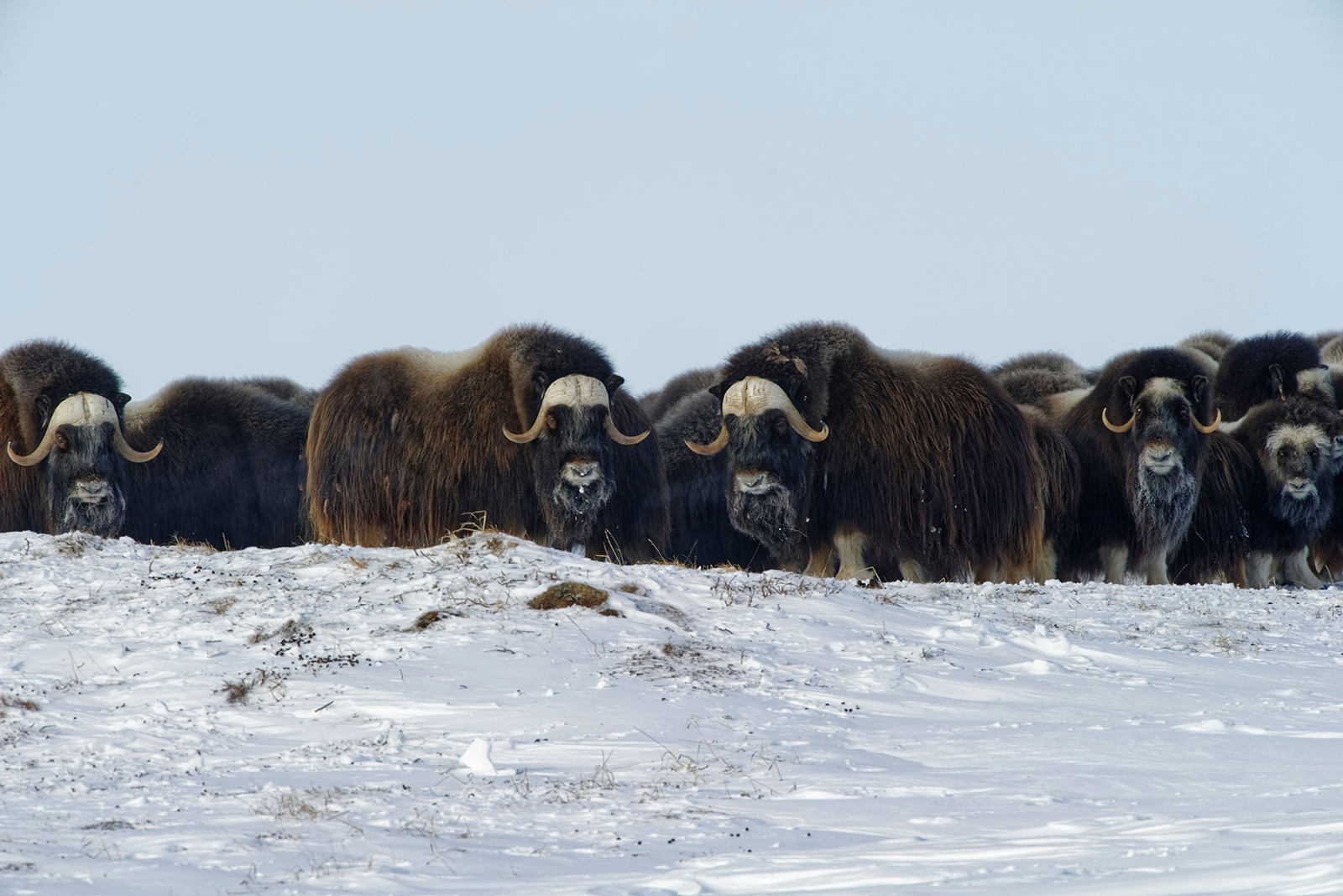
The musk ox is the Arctic’s living relic from the Ice Age, a creature so rugged it seems like it belongs in a prehistoric landscape! With its shaggy, long coat and hulking build, the musk ox thrives in some of the harshest conditions on the planet.
Its double-layered coat is nothing short of miraculous. The outer layer, long and coarse, protects against wind and moisture, while the underlayer, called qiviut, is one of the warmest natural fibers in the world – stronger and softer than cashmere.
This super-insulating wool allows musk oxen to endure the brutal Arctic winters where temperatures can make your bones rattle! These social herbivores live in herds for protection, by the way. And guess what they do when in danger?
Well, when faced with predators like wolves, they adopt a fascinating defensive strategy: the adults form a protective circle around the calves, heads out and horns ready to defend! Cool, isn’t it?
7. Walrus
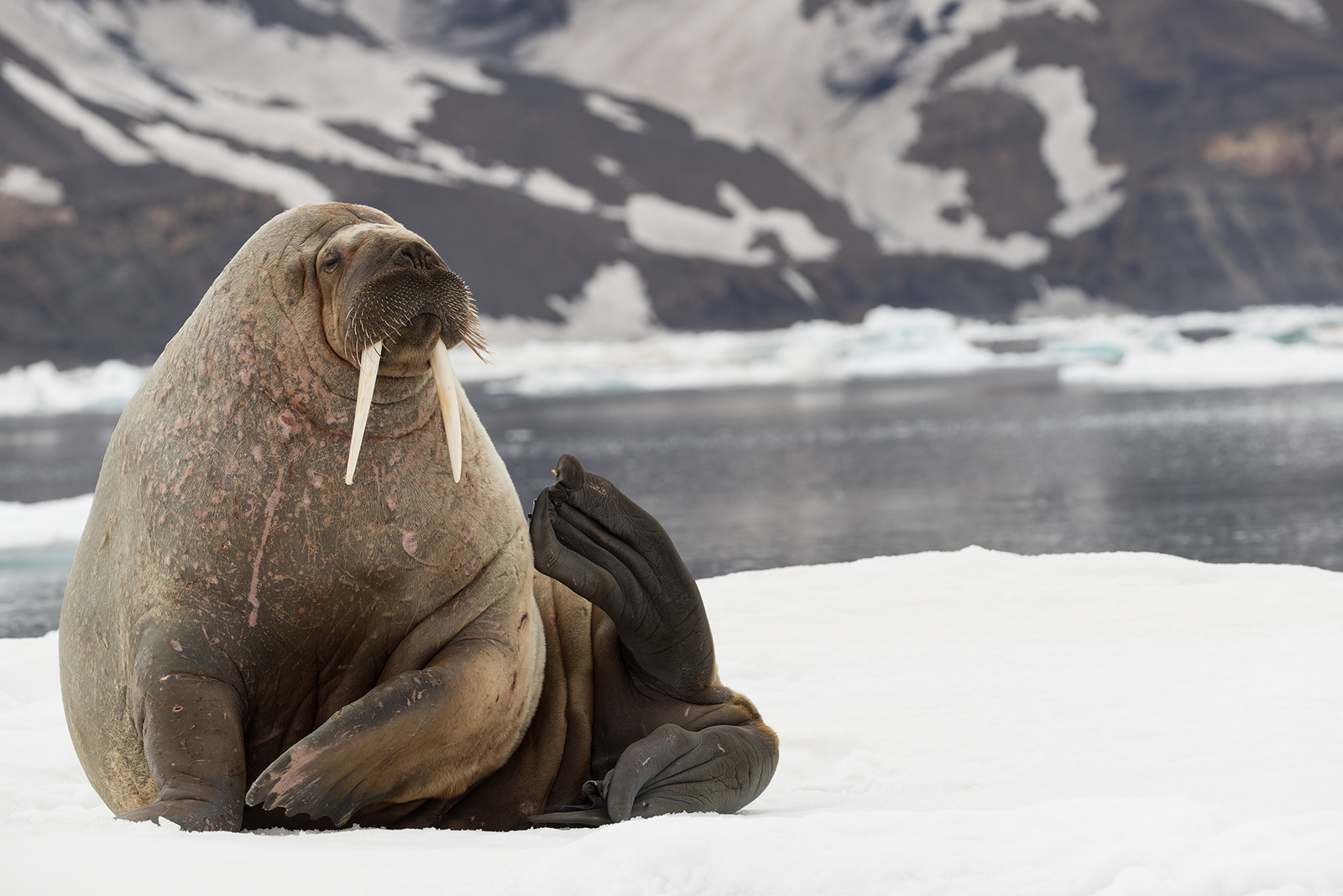
With its massive tusks and whiskered face, our walrus friend is one of the Arctic’s most recognizable giants! Weighing up to a staggering 2,000 pounds, these marine mammals are built for life in the freezing waters of the Arctic.
Their tusks can grow up to three feet long, and they are multi-functional tools used for hauling themselves onto ice floes, defending against rivals, and even breaking through the ice.
But the walrus’s most distinctive feature might be its face, covered in bristly, sensitive whiskers called vibrissae, which help them detect clams and other shellfish hidden in the ocean floor!
Despite their intimidating size, walruses are known for their social nature and can often be seen gathered in large, noisy groups called herds. Though they appear clumsy on land, walruses are surprisingly graceful swimmers. All in all, quite the endearing species! Love them!
8. Harp Seal
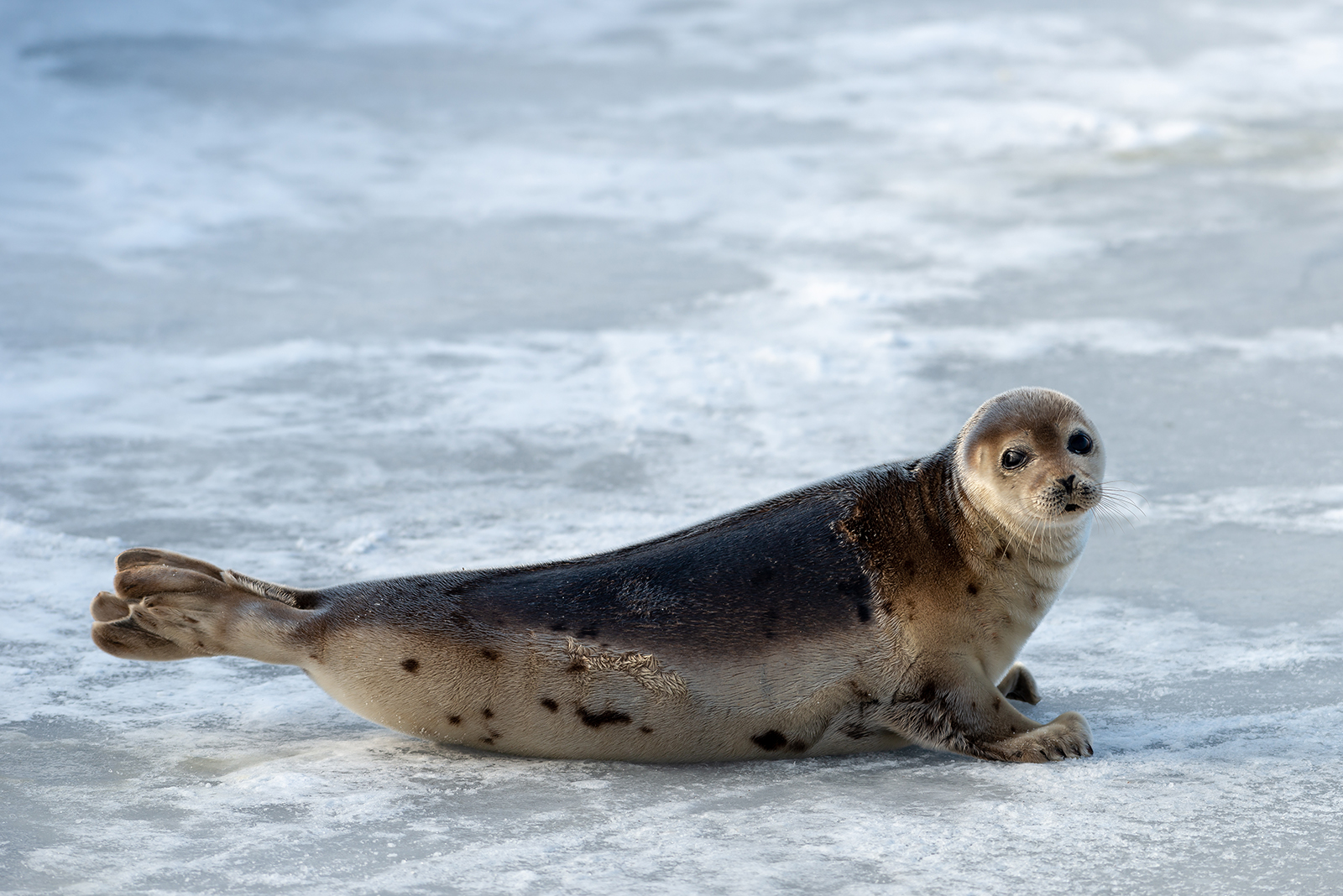
The harp seal pup might just be the poster child for Arctic cuteness, and for good reason! These tiny, fluffy white pups look like something straight out of a winter wonderland storybook, with their big black eyes and snow-white fur.
However, their angelic appearance serves a vital purpose, though. The white fur provides insulation during their vulnerable early days, helping them conserve heat while they rest on the ice! They need their naptime, people!
As harp seals mature, they go through a stunning transformation. Their white fur molts, giving way to a sleek, silvery coat marked with a distinctive black harp-shaped pattern on their back, which inspired their name.
Despite their gentle looks, harp seals are powerful swimmers and skilled hunters. They use their strong, paddle-like flippers to swim away in the icy waters of the North Atlantic, diving deep beneath the surface in search of fish and crustaceans!
9. Reindeer
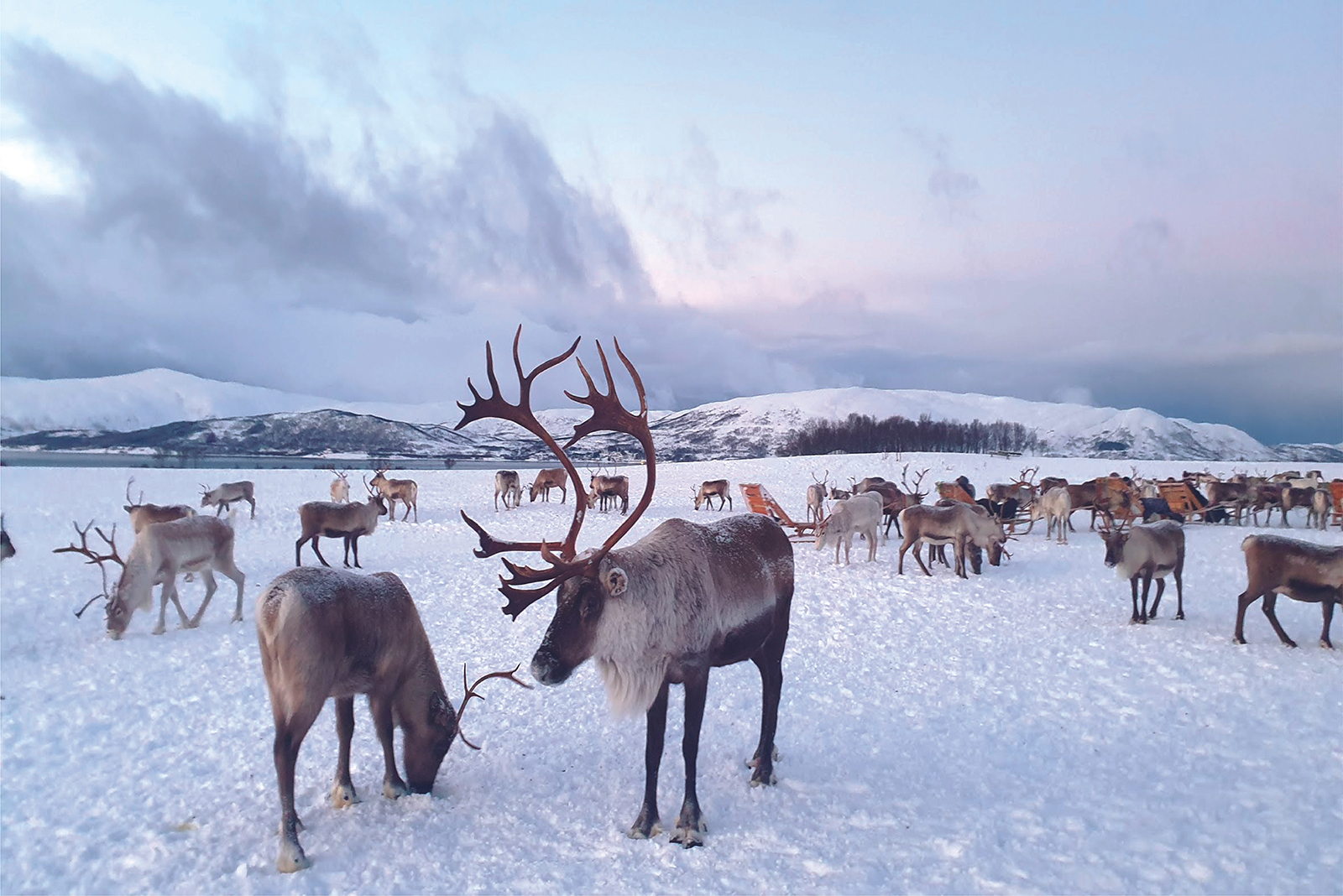
Reindeer, also known as caribou in North America, are the tireless marathon runners of the Arctic, famous for their incredible long-distance migrations.
These mammals travel thousands of miles every year in massive, synchronized herds, often numbering in the tens of thousands, as they search for food across the snow-covered wilderness!
Reindeer have adapted remarkably well to their icy environment. Their thick, dense fur traps body heat, while their fur-covered hooves act like natural snowshoes, distributing their weight evenly and allowing them to walk on deep snow without sinking. Evolution is quite fascinating, isn’t it? It gave them snowshoes, man!
These specialized hooves also serve another purpose! They’re basically reindeer shovels, helping them scrape through snow and ice to find lichen, which is their main winter food source.
Both males and females grow antlers, with females often keeping theirs longer into the winter months to defend scarce food resources!
10. Puffin
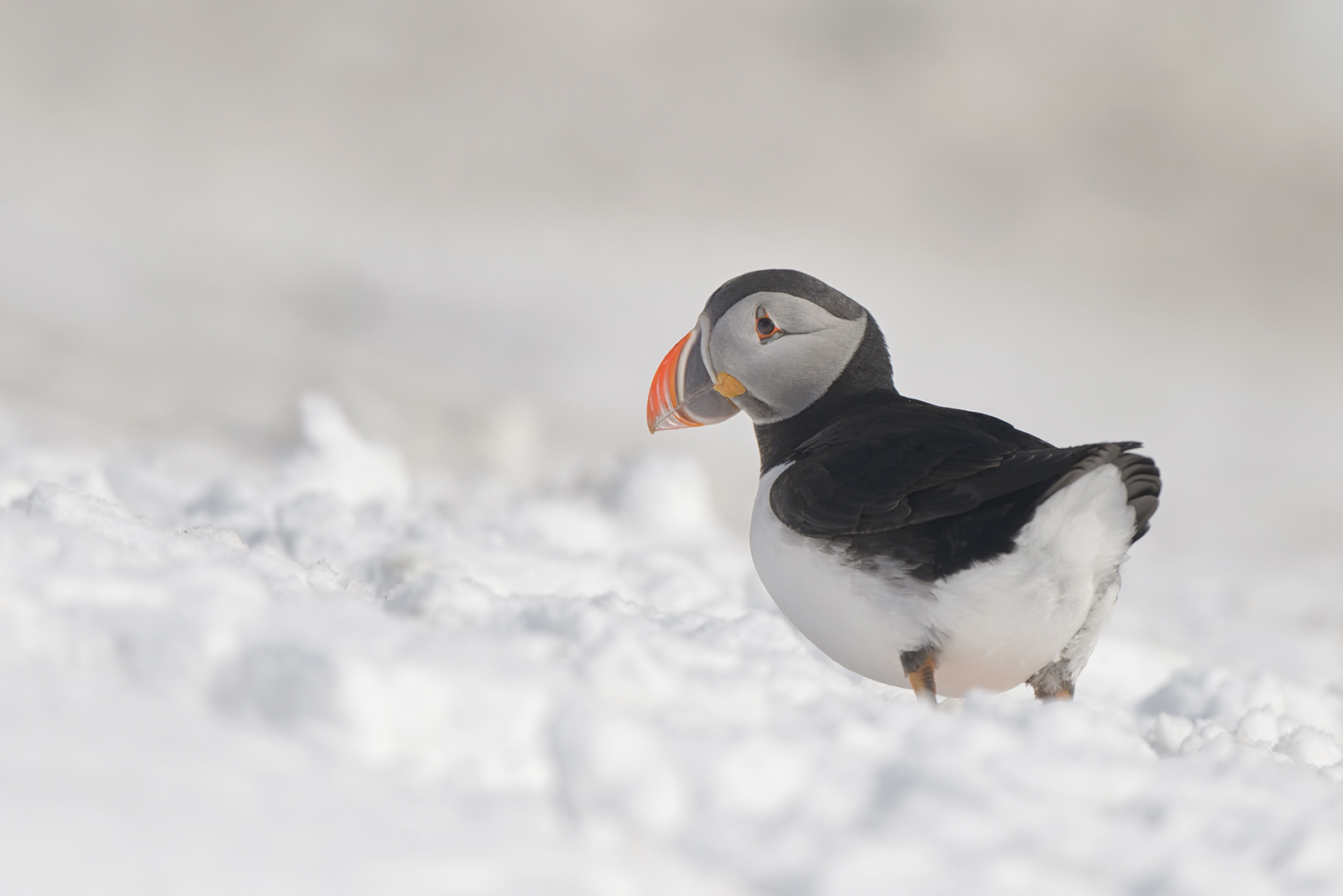
The puffin might be small, but it has a larger-than-life personality and some truly impressive skills beneath its cute exterior! If clownfish were birds, they’d be puffins, basically. They’re adorable, and due to their colorful beaks and bright orange feet, puffins are seabirds built for life in the extreme north!
While their waddle on land can appear comical, they transform into skilled aquatic hunters once they hit the water. Puffins use their wings like flippers, propelling themselves through the ocean with impressive speed and agility!
Their primary prey includes small fish like herring and sand eels, and they’ve perfected the art of carrying multiple fish crosswise in their beaks. Sometimes, they can be spotted holding over a dozen at once! Jeez, some of us can’t hold two grocery bags at once.
During the winter months, their beaks and feet fade to a duller shade, regaining their bright hues only when the breeding season arrives. Puffins nest on steep coastal cliffs, digging burrows for their chicks to stay safe from predators.
11. Greenland Shark
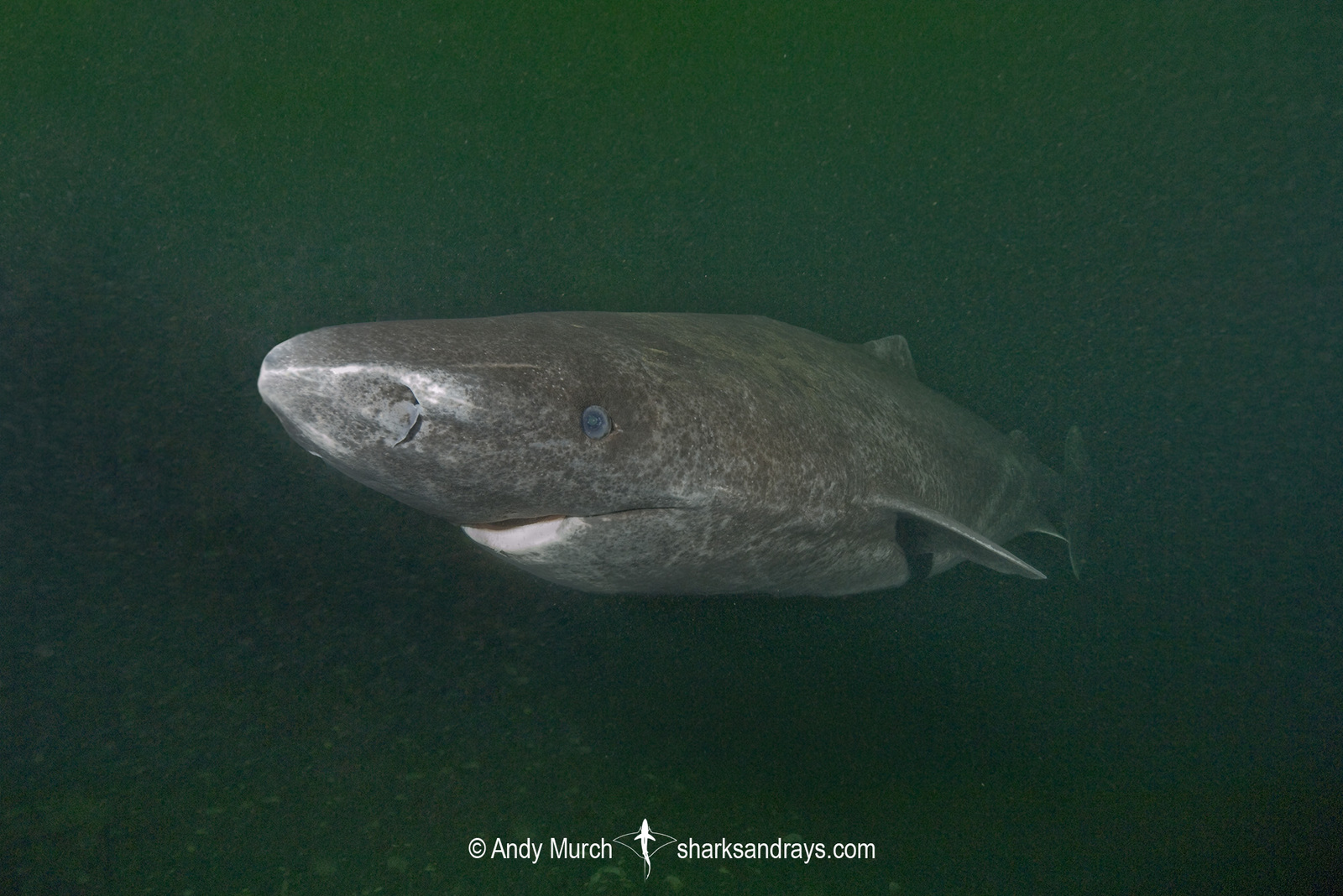
The Greenland shark, often referred to as a living fossil, is one of the most ancient and mysterious creatures lurking in the icy depths of the Arctic. As one of the longest-living vertebrates on the planet, some individuals are estimated to be over 500 years old!
These deep-sea giants can grow over 20 feet long and weigh more than 2,000 pounds, yet their slow, almost ghost-like movement has earned them the nickname ‘sleeper sharks’!
While they may seem sluggish, Greenland sharks are formidable predators, capable of hunting seals and scavenging on carrion from the ocean floor. Their near-blindness, often caused by parasitic crustaceans that latch onto their eyes, doesn’t hinder their survival either!
They rely on their other senses to locate prey in the dark, frigid waters. Greenland sharks inhabit such extreme depths and temperatures that much of their behavior remains a mystery, adding to their enigmatic presence!
12. Arctic Hare
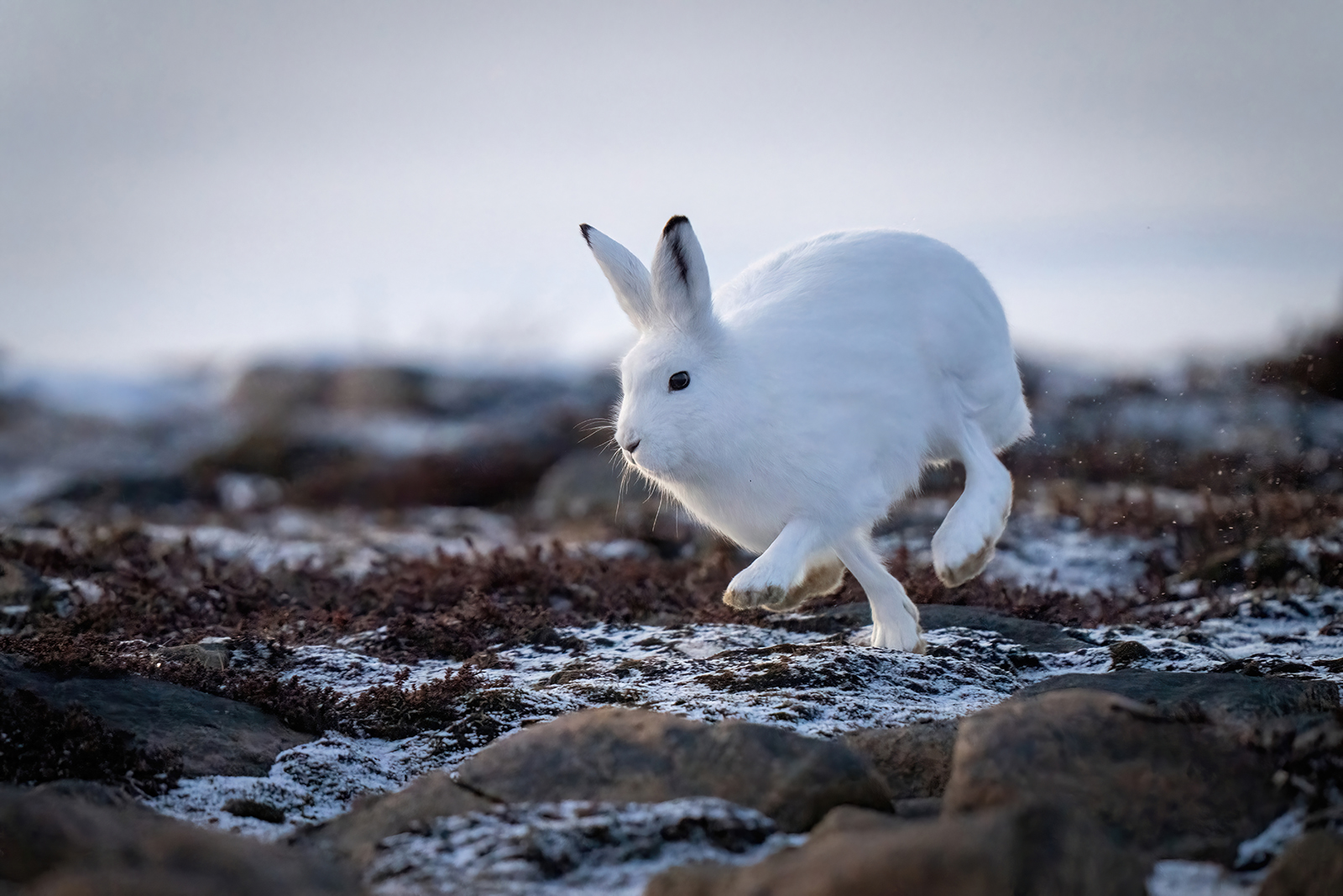
The Arctic hare is quite the winter speedster, blending both beauty and incredible athleticism in one small package! With a snow-white coat that blends perfectly into the icy surroundings, these small mammals almost disappear against the snowy landscape to avoid detection from predators like Arctic foxes and snowy owls.
This fur of theirs is quite a fancy coat! It’s an ultra-dense insulation layer designed to keep them warm in freezing conditions. Arctic hares have powerful hind legs too, allowing them to reach speeds of up to 40 miles per hour when fleeing danger.
Their long leaps and bursts of speed make them one of the fastest Arctic mammals! Interestingly, their coats change with the seasons, turning a bluish-grey during summer to better match the rocky tundra once the snow melts. Fashionistas!
Another cool thing? Arctic hares are social animals, with groups sometimes gathering in clusters for safety, though they can also be solitary in harsher months.

